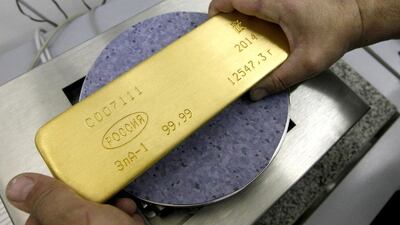Global demand for gold slowed in the second quarter of the year, after inflows into exchange traded funds (ETF) dropped from last year’s record pace, according to a World Gold Council report.
At 953.4 tonnes, demand was 10 per cent lower than 2016, while the first half of the year highlighted a 14 per cent slowdown to 2,003.8 tonnes.
The year-on-year comparisons are affected by record ETF inflows in 2016, which saw a surge in investment in the first half of the year.
While investors continued to buy gold-backed ETFs in the second quarter of 2017 and holdings for the first half of this year were up by 167.9 tonnes, “this pales into comparison with last year’s record growth”, the report said.
Factors that affected the “more erratic” investment pattern included monetary policy "normalisation" following the US Federal Reserve’s decision to raise rates; the gold price, which rose by 8 per cent in the first half of the year, and geopolitical tensions.
Western investors in particular were “attracted by gold’s properties as an insurance asset”, the report said.
“Central bank net purchases of 176.7 tonnes were also slightly lower in the first half (minus 3 per cent),” the report said.
However, bar and coin investment improved along with jewellery demand – although this sector remains weak in a long-term context.
Strong gains in India led the recovery in the jewellery segment, where second quarter demand shot up by 126.7 tonnes compared with 89.8 tonnes in the same period last year. The demand was boosted by festivals, weddings and an improved rural sentiment after the government continued to replace the currency that was removed from the the system by demonetisation last November.
“Global demand for gold jewellery of 480.8 tonnes was 8 per cent higher year-on-year, but Q2 2016 was itself very weak; demand remained well below the five-year quarterly average of 586.2 tonnes,” the report said.


